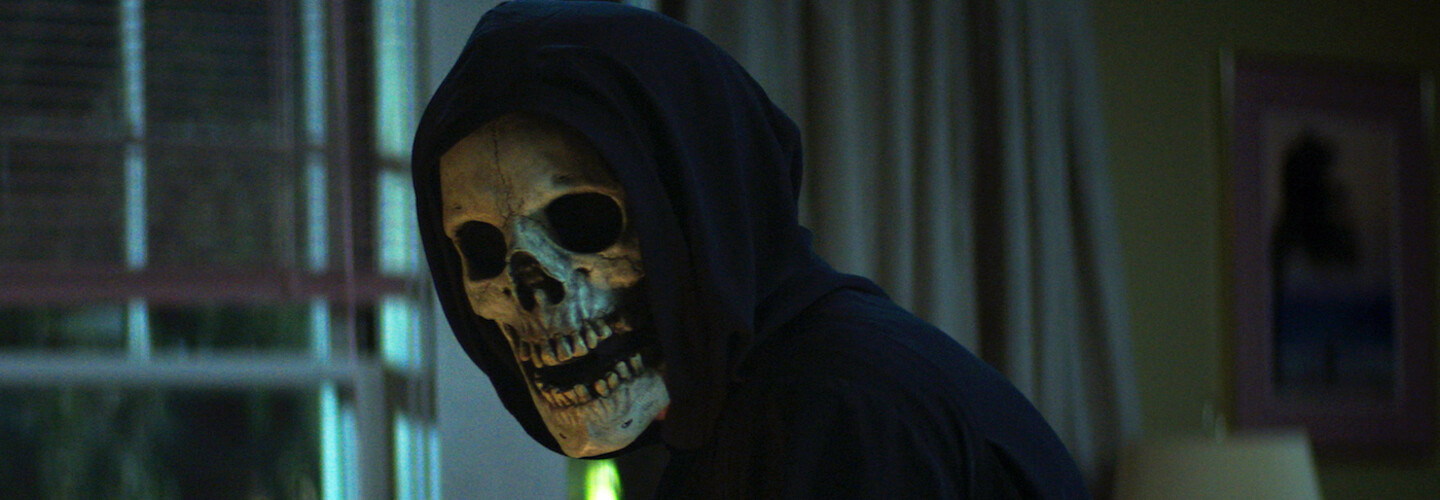
Things you missed on Fear Street Part 1: 1994
It’s been a hot minute since we’ve been blessed with a classic easy-viewing teen horror flick, including the likes of cult classics Scream, I know What You Did Last Summer, Nightmare on Elm Street and Friday the 13th. But while we loved all of those films back in the day, they are somewhat aged now, and horror fans, especially those in their late teens and early twenties, have been deprived of a good teen-scare for twenty years. There’s something about Fear Street that already feels cult, so we decided to dig deep into why that might be, and here’s what we found...
From little nods to old classics, to the well-thought-out names of places and people, there’s undeniable symmetry between Fear Street and 90s teen horrors. We won’t be surprised if in a few years horror spoofs like Scary Movie make a comeback and feature parallels to Fear Street, and we’re ready for it.
Shadyside versus Sunnyvale
Not only is the naming of the two towns an obvious allusion to the good and bad parts of town, it also sets the tone for the entire franchise. When we’re first introduced to Shadyside, it’s in a dark-lit mall, literally shaded in neon, but when we’re transported to Sunnyvale, the mood brightens and it almost feels like we’re on the road to a suburban California town, not too dissimilar to another teen horror setting, Sunnydale. The name is an obvious nod to Buffy the Vampire Slayer’s fictional California town which literally sits on top of a Hellmouth. The difference with Fear Street, is that Shadyside is Sunnyvale’s version of a Hellmouth, and instead of being directly beneath it, they’re side by side. In other words,
-
Sunnvale = Sunnydale
-
Shadyside = Hellmouth
Maya Hawk’s unforgettable security shutter slashing (spoiler warnings below)
If you’re ready to take a trip down memory lane, the opening scene of Fear Street Part 1: 1994 is an obvious parallel to the opening of the Scream franchise. Maya’s character Heather answers a call on the rotary telephone and soon finds herself running from none other than a skull masked killer trying to stab her to death. But our favourite comedic-horror nod was when Heather attempted to escape under the security shutter that had conveniently failed to close earlier on. Remember the garage door scene from Scream? We’ll leave it below to refresh your memory! While Heather does manage to get out, she ultimately meets her demise, and, much like Scream, she unmasks the killer, but this time we actually see his face, and it turns out to be her friend (another nod to the Scream franchise which resolved the killer as Cindy’s boyfriend). To recap,
-
The opening scene parallels the beginning of the Scream franchise
-
The security shutter copies the garage door scene from Scream
-
The killer is someone close to the victim, reinforcing that obvious connection between the films, which ultimately makes us feel like we’re being transported back to the 90s.
Ryan Torres, AKA Skullmask
Continuing the parallels between the Scream franchise and the Fear Street franchise, when Skullmask is revealed to be Ryan Torres, Heather’s friend, we can’t help but think of Billy Loomis in Scream, the protagonist’s boyfriend. But they don’t just have that in common. The biggest comparison is of their costumes and the names they adopt. Ghostface is an iconic look that has been used for years as a Halloween mask – we’d be surprised if you’ve never owned or known someone to own a Ghostface mask – but it all originated from the Scream franchise. Fear Street opts for a very similar Skullface mask and accompanying robe, and the clumsiness of the killer makes us think that the witch in possession of the boy had been watching a lot of teen horror flicks for inspiration at the time...
Halloween
This little nod to the killer from Halloween is very subtle – a blink and you’ll miss it moment. Billy Barker was one of the killers possessed by the witch way back in 1922. He was a young boy with a creepy face mask (ringing any bells?) who used a baseball bat to massacre his entire family. While the killer in Halloween used a knife to kill his sister in that iconic opening shot, what makes the two killers so in sync is the way that Barker commits his crimes. Check out the scene from Fear Street on Netflix to see if you can spot the similarities in their movement!
Stranger Things have happened
One thing that stuck out to viewers was the obvious similarities to Netflix’s original series Stranger Things, which also stars Maya Hawk in a prominent role in season 3. When the trailers were first released, the comments were flooded with people mistaking the film for the trailer to Stranger Things season 4. So were there any other little nods to the iconic series laced through the film? Lets take a look:
-
Both Fear Street and Stranger Things play on the nostalgia of past eras, including the 90’s and mid 80s.
-
Each character has an extensive backlog of pop culture references relevant to their era.
-
Both set in a neon-lit suburban mall where people die.
-
Casting Maya Hawk as one of the titular characters wasn’t a coincidence. The writers snatched her up after seeing her in Stranger Things and decided to pull the Drew Barrymore opening scene from Scream on us.
Honourable mentions:
The camp Nightwing Killer is basically Jason Voorhees from Friday the 13th, and The Milkman Murderer, who has half a burned face, provides a great parallel to American Horror Story: Murder House’ Larry Harvey, the man with the half-burned face, who was considered under the influence of the murder house, much like the Milkman who was under the influence of the witch.
So what’s the deal with the Fear Street trilogy? Should you bother with it?
If you big into Stranger Things, or any 90s slasher movies and fancy a trip down memory lane to the 90s filled with pop-culture references and genuinely good character focus, we think so. Plus, Netflix are releasing all three parts of the adapted RL Stine novels one after the other, with Part 2: 1978 coming out 9th July and Part 3: 1666 releasing the week after that on the 16th July. Long gone are the days of waiting a year for a sequel – is this the future for film trilogies? We’ll see.
Become a telly expert |

|

|
|
Get the latest on what's coming soon to Netflix this month |
Find out what films are available for free on Freesat every week |
Follow usGet the latest telly news and updates PLUS access to competitions and exclusive content |

|

|

|





